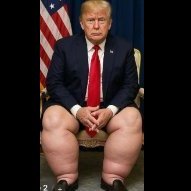USA Trump's New Tariffs Hit Dozens of Countries Worldwide
-
Recently Browsing 0 members
- No registered users viewing this page.
-
Topics
-
-
Popular Contributors
-
-
Latest posts...
-
222
USA Maxwell Clears Trump: DOJ Considers Releasing Interview
Fortunately, I don't think anyone on this forum feels the way you do. You're damaged beyond repair. -
22
Report Danish Zoo Faces Backlash for Using Pets as Predator Feed
this boy loves chickens, put us out of business - 555 -
8
RKF Jr. cancels half-billion in mRNA vaccine research funding
Another in your predictable stable of prolific COVID misinformation peddlers, in this case, a right-wing Trumpy Republican politician with a long history of spreading COVID misinformation: Fact-checking Sen. Ron Johnson’s anti-vaccine misinformation May 10, 2021 "Under the guise of “just asking the questions,” Republican Sen. Ron Johnson of Wisconsin spread anti-vaccine misinformation on a right-wing radio show Thursday, questioning why efforts were being made to vaccinate the general US population, especially young people and those who had previously been infected with Covid-19" (more) https://www.cnn.com/2021/05/07/politics/ron-johnson-vaccine-misinformation-fact-check Four Pinocchios for Ron Johnson’s campaign of vaccine misinformation July 16, 2021 "For months, the senator has been peddling misinformation about coronavirus vaccines, undeterred by fact checkers, federal health agencies, medical experts and a growing body of scientific research. We previously dug into two Johnson claims that resurfaced in this interview on Fox News, a network whose right-wing personalities consistently bash the Biden administration’s vaccination efforts. More cases and research studies have accumulated since our fact checks were published, but Johnson’s statements remain unsupported by science." (more) https://www.washingtonpost.com/politics/2021/07/16/four-pinocchios-ron-johnsons-campaign-vaccine-misinformation/ etc etc etc... -
6
WISE transfer times getting longer - why?
For both accounts in LOS it is to the Bangkok Bank. -
43
THAILAND LIVE Thailand Live Thursday 7 August 2025
Influencer Arrested in Suphan Buri Drug Bust Picture courtesy of Thairath A prominent social media influencer, Ekachai, has been apprehended in a significant drug operation linked to a methamphetamine network in Suphan Buri. This operation, conducted by local police and the Region 7 investigative team, took place on August 6. Full Story: https://aseannow.com/topic/1369091-influencer-arrested-in-suphan-buri-drug-bust/ -
1
Report Elephants Roam Far from Forests in Eastern Thailand
Many have been spotted on soi 6 in Pattaya.
-
-
Popular in The Pub







Recommended Posts
Create an account or sign in to comment
You need to be a member in order to leave a comment
Create an account
Sign up for a new account in our community. It's easy!
Register a new accountSign in
Already have an account? Sign in here.
Sign In Now